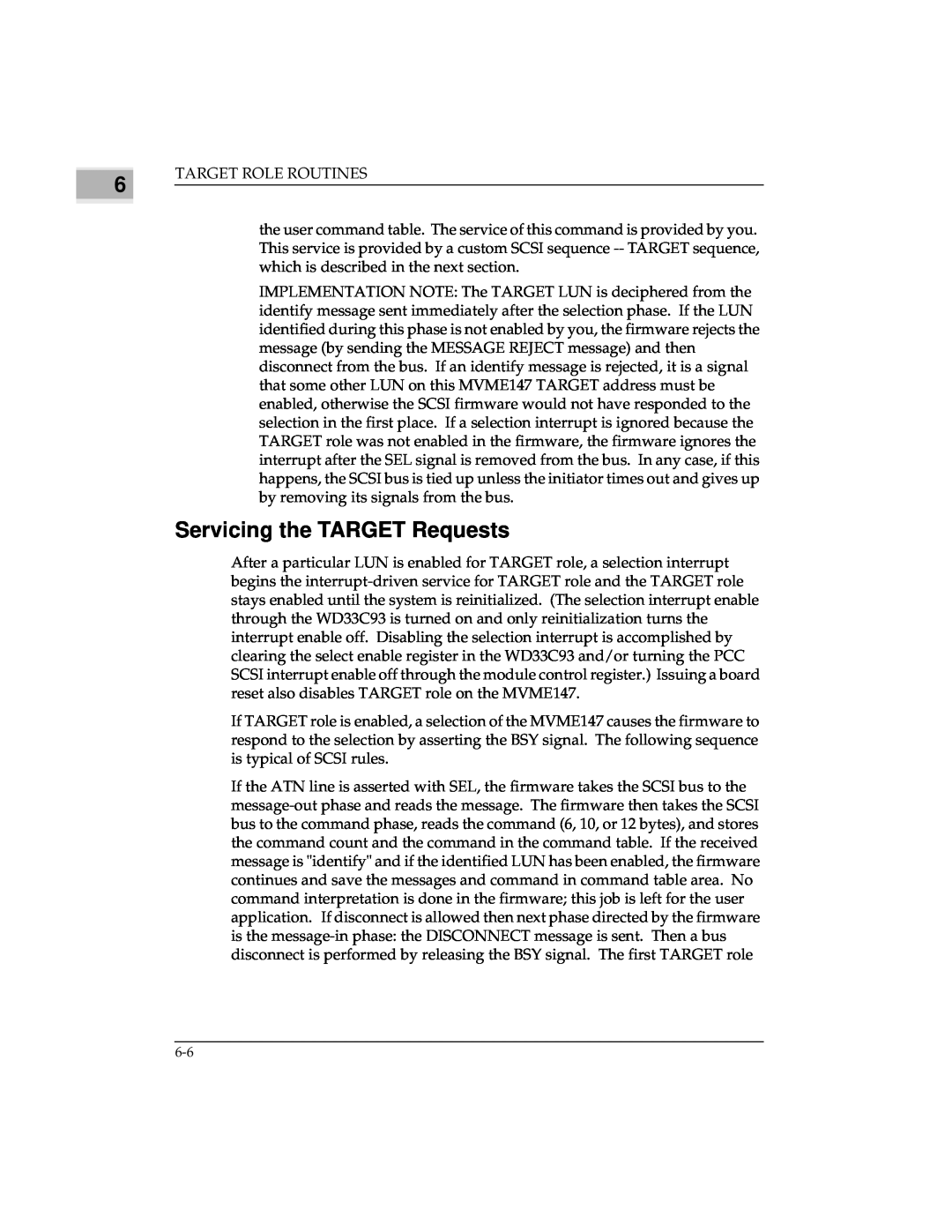
6
TARGET ROLE ROUTINES
the user command table. The service of this command is provided by you. This service is provided by a custom SCSI sequence
IMPLEMENTATION NOTE: The TARGET LUN is deciphered from the identify message sent immediately after the selection phase. If the LUN identified during this phase is not enabled by you, the firmware rejects the message (by sending the MESSAGE REJECT message) and then disconnect from the bus. If an identify message is rejected, it is a signal that some other LUN on this MVME147 TARGET address must be enabled, otherwise the SCSI firmware would not have responded to the selection in the first place. If a selection interrupt is ignored because the TARGET role was not enabled in the firmware, the firmware ignores the interrupt after the SEL signal is removed from the bus. In any case, if this happens, the SCSI bus is tied up unless the initiator times out and gives up by removing its signals from the bus.
Servicing the TARGET Requests
After a particular LUN is enabled for TARGET role, a selection interrupt begins the
If TARGET role is enabled, a selection of the MVME147 causes the firmware to respond to the selection by asserting the BSY signal. The following sequence is typical of SCSI rules.
If the ATN line is asserted with SEL, the firmware takes the SCSI bus to the
